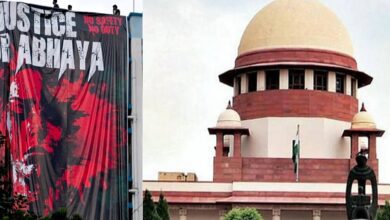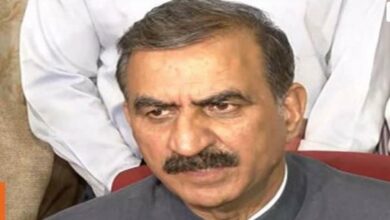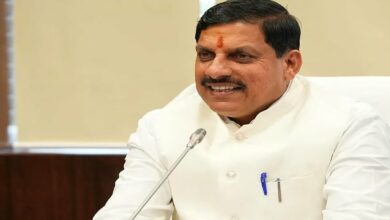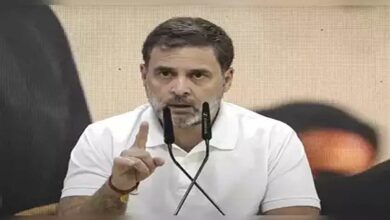375 km rail network expansion will boost economic development: Ashwini Vaishnaw
Ashwini Vaishnaw, the Union Minister of Railways, Information & Broadcasting, and Electronics and Information Technology, recently gave in-depth explanations of three significant railway infrastructure projects that have been approved by the Cabinet Committee on Economic Affairs (CCEA). These projects will greatly increase connectivity and spur economic growth in Madhya Pradesh, Uttar Pradesh, and Maharashtra.
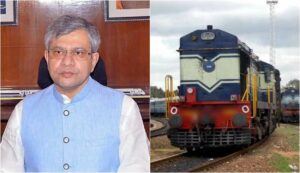
The Minister emphasized the importance of the 375 km multi-tracking projects, which include the Prayagraj (Iradatganj)-Manikpur 3rd line (84 km), the Bhusawal-Khandwa 3rd & 4th lines (131 km), and the Jalgaon-Manmad 4th line (160 km), while going over the project’s specifics and its advantages for the Khandesh region of North Maharashtra and connectivity to the Purvanchal region of Uttar Pradesh.
By facilitating the flow of both passenger and freight trains, these initiatives are expected to improve connection between Prayagraj and Mumbai and contribute to the socioeconomic development of the area.
The Minister went on to explain that these three Cabinet-approved projects are a part of a larger plan to enhance container transit between Purvanchal and Mumbai, which includes Varanasi. To make sure the corridor meets the demands of developing companies, a thorough assessment that extended to Varanasi was carried out.
These initiatives will improve this section’s logistical capabilities. Additionally, this portion would serve as a feeder to the Eastern Dedicated Freight Corridor (EDFC), improving connection to important ports in Maharashtra such Jawaharlal Nehru Port Mumbai and the soon-to-be Vadhwan Port while also aiding in the decongestion of major towns and railway stations. The smooth transportation of industrial and agricultural items will be made possible by this link, bolstering the logistics ecosystem and promoting economic growth.
The Minister also highlighted the performance of the newly opened Shetkari Samridhi Rail, which runs from Deolali to Danapur and has had a 200 percent occupancy rate since opening. On the advice of Nashik farmers, this novel rail service—which has ten passenger cars and ten coaches devoted to agricultural produce—was launched. Since they often cannot reserve a whole train, many small-scale farmers stated the need for a flexible transportation option. From half a quintal of product, such onions or pomegranates, to bigger consignments, like ten quintals of soybeans, farmers may carry a variety of amounts using the Shetkari Samridhi Rail.
He said that the farmer-friendly approach of this train has received a lot of praise, with comments emphasizing its usefulness and appeal. Its success has prompted proposals to extend such services to other areas, giving more farmers access to dependable and reasonably priced transportation for their produce.
In response to a query from the press, the Union Minister spoke about the development and use of Kavach technology, which aims to improve railway network safety and operational effectiveness.
He emphasized that the updated Kavach Version 4.0 is replacing Kavach Version 3.2, which had been successfully deployed across 1600 kilometers. On July 16, RDSO authorized Kavach Version 4.0. To further improve train operations’ efficiency and safety, the updated version includes cutting-edge innovations.
Over 9,000 technicians and engineers have been trained to install Kavach technology, and orders have already been made as part of a large drive to equip 10,000 locomotives with this technology. The Union Minister said that testing between Sawai Madhopur and Kota has been finished, and the portion is now operational with Kavach 4.0, likening the scope of this initiative to the launch of a new telecom firm. under addition, installation has started on routes including Delhi-Mathura, Delhi-Alwar, and Delhi-Kanpur, while certification for the Mumbai-Vadodara corridor is under progress.
Within the next six years, Kavach 4.0 is expected to be deployed across the whole nation, having already been deployed over 1,000 kilometers. Vaishnaw pointed out that other nations have taken more than 20 years to deploy comparable safety measures across their networks, but India is aiming for national coverage in only six years.
Kavach was installed on a locomotive in 22 hours after training, demonstrating how effective the installation procedure has become. He stated that without Automatic Train Protection (ATP) technologies like Kavach, it is not possible to reach speeds of 130 km/h and higher.
The Union Minister also described the economic and environmental advantages of the railway projects, stressing that the railways, being an energy-efficient and environmentally friendly form of transportation, will be essential in accomplishing the nation’s climate goals while also drastically cutting logistics expenses.
In addition, he pointed out that these initiatives would help cut CO2 emissions by 271 crore kg, which is the same as planting 15 crore trees. These three projects are anticipated to be finished in four years and would cost a total of around Rs 7,927 crore. The initiatives would save a total of 15 crore litres of fuel annually and result in the incremental loading of 50 million tonnes of freight. This demonstrates the government’s dedication to economic growth and sustainable development via environmentally friendly and effective infrastructure.
These 375-kilometer railway line projects will link important areas, including as the Mumbai-Manmad-Bhusaval-Khandwa-Satna-Prayagraj-Varanasi route, the Mumbai-Howrah golden diagonal, and the Mumbai-Prayagraj-Varanasi route.
The improvements will make it possible for more passenger trains to run, which will help pilgrims going to the Jyotirlingas in Varanasi (Kashi Vishwanath), Khandwa (Omkareshwar), and Nashik (Trimbakeshwar), as well as to places of worship in Prayagraj, Chitrakoot, Gaya, and Shirdi. The projects would also improve connection between Mumbai in the West and the Khandesh area in Maharashtra, Madhya Pradesh, and Purvanchal in North India by increasing capacity and operating efficiency.
These projects will enhance access to major tourist destinations like the Khajuraho UNESCO World Heritage Site, the Ajanta and Ellora Caves UNESCO World Heritage Sites, Devgiri Fort, Asirgarh Fort, Rewa Fort, Yawal Wildlife Sanctuary, Keoti Falls, Purwa Falls, and more, in addition to providing religious and cultural advantages.


